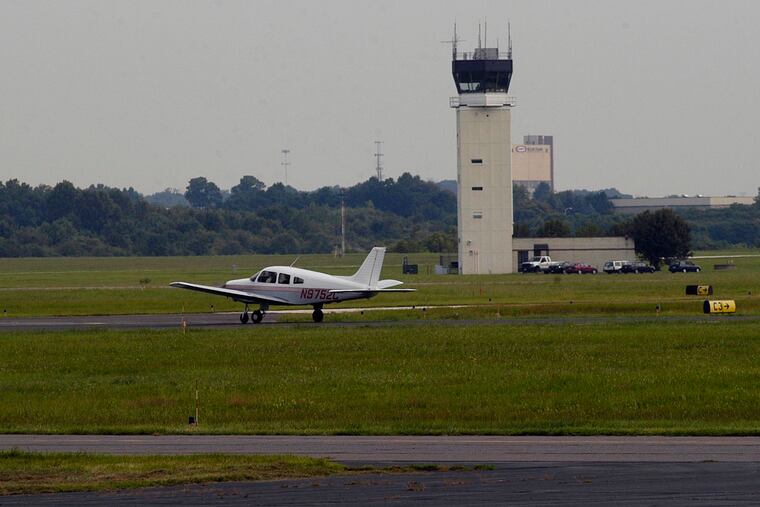End of internet dead zone? Northeast Philly Airport hopes to have high-speed internet before 2020.
The move comes a week after The Inquirer published a story about complaints by small businesses that had to use mobile hot spots, DSL or expensive Ethernet services that cost $1,800 a month to go online at the city’s airport near Academy Road.

Northeast Philadelphia Airport, which has 5,000 landings and takeoffs a month, will finally get high-speed internet, a spokeswoman confirmed Tuesday.
The move comes a week after The Inquirer published a story about complaints by small businesses that had to use mobile hot spots, DSL, or expensive ethernet services costing $1,800 a month to go online at the city’s second airport, near Academy Road. At the time, Verizon, Comcast, and the city-owned airport blamed each other when asked why the high-tech urban location is still without such a basic amenity as high-speed internet.
“I can confirm that [Verizon] FIOS installation is in progress and will be available in Northeast Philadelphia Airport’s hangars and buildings in about two months,” airport spokeswoman Florence Brown said in an email.
Verizon spokesman David Weissmann added on Wednesday that “we have secured approvals to begin installing fiber optic cable and equipment to make Fios available to locations at the airport. We expect to offer service later this year.”
Verizon previously said it lacked the approvals.
Howard Cooper, who runs his Tailwinds flight school at the airport, said on Tuesday that he was “cautiously optimistic,” but he is waiting to celebrate until it happens.
Cooper leased a second-floor office at the airport last October, only to learn later that he couldn’t get internet services such as Comcast Xfinity or Verizon Fios. Instead, Tailwinds had to use DSL, expensive ethernet services, or mobile hot spots.
Cooper uses Verizon mobile hot spots — spending $500 to $600 a month — for social-media marketing and even software updates for his flight simulator.
Other businesses that have leased space at the airport for many years are taking a wait-and-see attitude about the latest developments involving the internet, Cooper said.
In late 2015, Verizon competitor Comcast reached a data-service deal with the city to manage its telecom network, agreeing to spend $10 million to wire more than 200 recreation centers, health clinics, police stations, and other city buildings with high-speed fiber optic lines, while also earning $32 million in fees over about 15 years. Verizon had previously held the city contract.
Philadelphia’s two airports were carved out of Comcast’s citywide agreement, and the cable giant is not contractually allowed to offer individual businesses at the Northeast Philadelphia Airport telecom services, Comcast officials say. Comcast is negotiating to gain access to the airport, they say.
It has been surprising to those who work at the airport that they cannot even get critical weather reports over their laptops. Employees resort to downloading weather reports on their 3G mobile phones because the slower DSL-connected computers crash.
An estimated 500,000 people in Pennsylvania — and millions throughout the United States, mostly in rural hinterlands — lack access to high-speed internet, according to the Federal Communications Commission. Experts believe the number could be much higher because of inaccurate internet-coverage maps.
Internet dead zones also plague urbanized areas where telecom companies neglected to extend high-speed fiber lines because they don’t think they can earn profits there.
These dead zones persist even as businesses are increasingly, even totally, dependent on the internet for banking, scheduling employees, checking the weather, marketing, and exchanging documents and data.